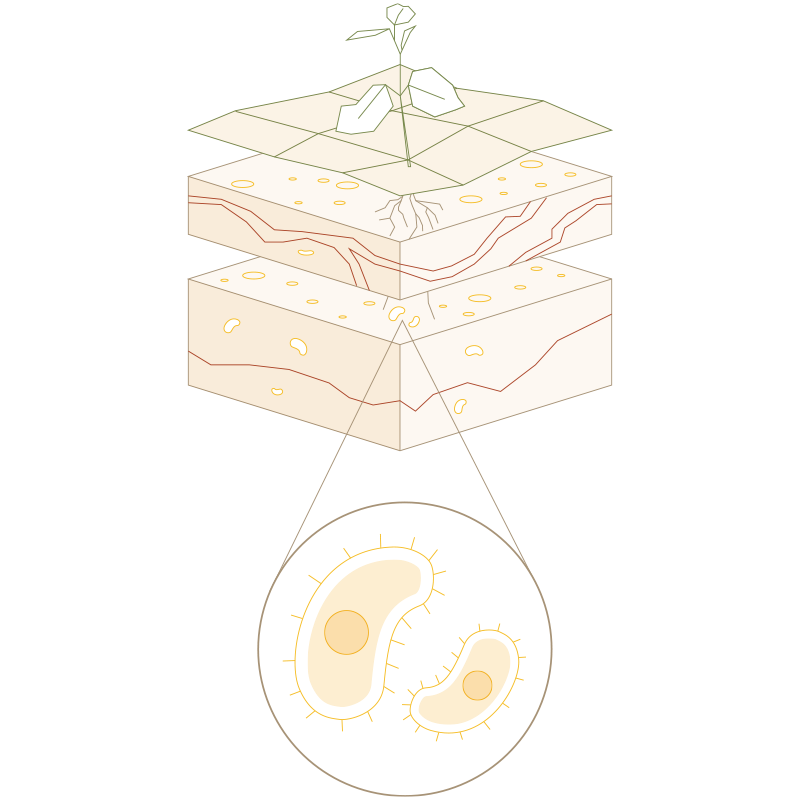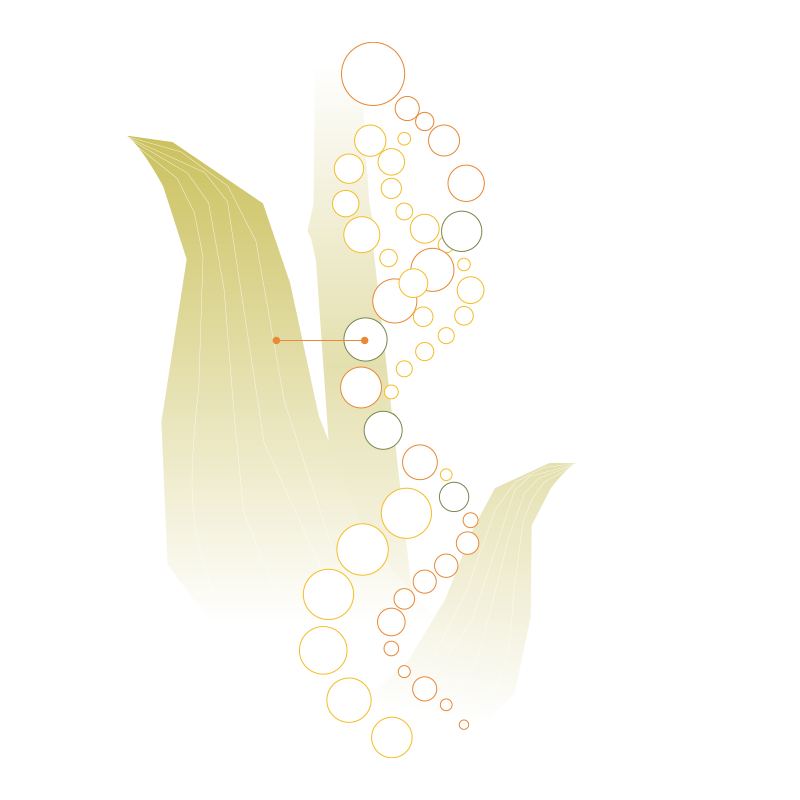
How nature inspires innovation in modern agriculture
Learning from Nature on the Farm
Human curiosity has fueled scientific and agricultural progress for centuries. Wondering, observing, and asking questions are fundamentally human traits that are especially important to agriculture and science. In both fields, there is no better teacher than Mother Nature. The story of farming innovation is largely about observing the intricate web of systems and processes that support life on Earth, and learning from them.
A Closer Examination of Nature
In agriculture right now, many researchers are taking a closer look at nature’s processes for lessons to apply on the farm. For example, a teaspoon of topsoil contains more microorganisms than there are people on Earth. Combined with advancements in understanding a plant’s microbiome, this has had profound implications for how we understand and approach soil health.
Another example is how plant breeders observe crop performance so they can better understand evolutionary changes in plants. These subtle clues can help breeders better match plants to local environments and climate conditions. Advancements in our ability to understand a plant’s DNA, coupled with field observation, are accelerating the pace of research and broadening our knowledge of ideal growing environments for specific plant varieties.
Evolution of Observation Tools and Techniques
Being inspired by nature is sometimes a function of how well we can observe and understand the many variables at work. In recent years, the tools we use in agriculture to observe nature have grown in scope and accuracy. This has led to an upswing in the development of digital tools so that farmers have more information to use to make local decisions on their farm.
Close investigation of the processes of nature has led to innovation in three vital areas within modern agriculture: microbes and soil health, locally adapted plant genetics, and advanced breeding technologies.
Close investigation of the processes of nature has led to innovation in three vital areas within modern agriculture: microbes and soil health, locally adapted plant genetics, and advanced breeding technologies.

What We’re Learning: Taking Science Under Ground
Improved microscopes and imaging technology have advanced our understanding of microbial activity, cellular processes, and soil health. As our ability to observe nature has continued to evolve, agricultural practices have followed suit.
One of the most important discoveries we’ve made concerns the role played by microbes within a healthy soil environment. These microscopic life forms perform a variety of vital functions, from decomposing organic materials to fixing atmospheric nitrogen in the soil.
What We’re Learning: Taking Science Under Ground
Improved microscopes and imaging technology have advanced our understanding of microbial activity, cellular processes, and soil health. As our ability to observe nature has continued to evolve, agricultural practices have followed suit.
One of the most important discoveries we’ve made concerns the role played by microbes within a healthy soil environment. These microscopic life forms perform a variety of vital functions, from decomposing organic materials to fixing atmospheric nitrogen in the soil.
Microbials, the name given to products that are derived from or contain naturally-occurring materials, have a range of potential applications in farming, including:
- Helping with plant health, including nutrient uptake and plant vigor
- Targeted crop protection, including pest management and disease resistance
- The possibility of complementing or replacing traditional fertilizers and chemicals
These applications are generating tremendous excitement in the agricultural community, and the industry is dedicating substantial resources to continue research and development.
Breeders have identified over 1,000 genes that help plants adapt to climate change.
Breeders have identified over 1,000 genes that help plants adapt to climate change.

What We’re Learning: Cataloging Genes that Help Plants Adapt
Continuing the trend of gaining greater knowledge from the observation of nature’s processes, collective research from both the public and private sectors has greatly improved our understanding of how plants may be adapted genetically to thrive in changing climatic conditions. For example, in maize, breeders have identified more than 1,000 genes that contribute to a plant’s ability to adapt to a specific environment. Focusing on the ways maize has evolved to accommodate specific latitudes and elevations, these genetic clues can provide a roadmap for future plant breeding research.
What We’re Learning: Cataloging Genes that Help Plants Adapt
Continuing the trend of gaining greater knowledge from the observation of nature’s processes, collective research from both the public and private sectors has greatly improved our understanding of how plants may be adapted genetically to thrive in changing climatic conditions. For example, in maize, breeders have identified more than 1,000 genes that contribute to a plant’s ability to adapt to a specific environment. Focusing on the ways maize has evolved to accommodate specific latitudes and elevations, these genetic clues can provide a roadmap for future plant breeding research.
In addition to these genetic clues, advances in modern genetic sequencing technology can provide new insights to help breeders have a greater understanding of plant genomes. A more accurate understanding of plants at the genetic level helps breeders develop locally adapted varieties for farmers facing the effects of climate change.

What We’re Learning: Modern Evolution of Plant Breeding
A final example of the improvements in scientific observation involves our ability to look inside plant cells. A variety of breeding applications is helping plant scientists emulate internal plant mechanisms. There are two broad categories of genetics involved in this trend. The first focuses on the various mechanisms by which cells regulate and modify their own genetic material. The second focuses on the internal process cells use to control the production of proteins.
What We’re Learning: Modern Evolution of Plant Breeding
A final example of the improvements in scientific observation involves our ability to look inside plant cells. A variety of breeding applications is helping plant scientists emulate internal plant mechanisms. There are two broad categories of genetics involved in this trend. The first focuses on the various mechanisms by which cells regulate and modify their own genetic material. The second focuses on the internal process cells use to control the production of proteins.
Some of these applications are already commercially available and providing benefits, such as the non-browning Arctic® Apple and the Rainbow papaya, the variety developed to save the Hawaiian papaya industry from ringspot virus during the 1990s. Others hold promise in the fight against citrus greening in Florida’s orange groves, and they have the potential to support efforts to protect plants from insects, weeds, and diseases.
Outside of the realm of crop protection, but related to agriculture at a higher level, these technologies are also being explored to help defend honey bees against the varroa mite, a parasite that has devastated bee populations in North America during the past two decades.
Stewardship and Innovation for the Future
Modern agriculture is all about finding solutions to minimize the impact on the environment over the long term. While the advances of the past century are amazing in their own right, agriculture must continue to sustain its commitment to continuous improvement, and today’s innovations can help. By embracing curiosity, observation, and innovation inspired by nature, modern agriculture continues to work for the benefit of future generations.
Related Articles


The Beeconomy: Economics and Insect Pollination

